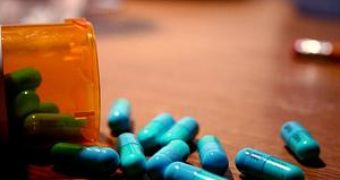According to a new report issued by scientists working with the Cary Institute of Ecosystem Studies, pharmaceutical pollution is currently affecting streams worldwide.
Despite the fact that further research on the matter at hand is needed, the researchers speculate that said type of pollution affects not just water quality, but also aquatic wildlife.
Following their looking into how several chemical compounds used in the pharmaceutical industry influence streams found in New York, Maryland and Indiana, the experts concluded that an antihistamine commonly used by people suffering with allergies caused the streams' biofilms to experience a 99% decrease in their photosynthesis rates.
Furthermore, the biofilms exposed to this antihistamine (i.e. diphenhydramine) had their respiration rates affected by said chemical compound.
“We focused on the response of biofilms -- which most people know as the slippery coating on stream rocks – because they're vital to stream health,” Dr. Emma Rosi-Marshall explained.
“In streams, biofilms contribute to water quality by recycling nutrients and organic matter. They're also a major food source for invertebrates that, in turn, feed larger animals like fish,” the researcher further argued.
By the looks of it, other compounds listed as sources of pharmaceutical pollution have a similar effect on a given stream's biofilm.
Because of this, the scientists theorize that both aquatic wildlife and water quality stand to be affected by them on the longer run.
For the most part, pharmaceutical pollution need be attributed to either poor infrastructure, or sewage overflows, Science News informs us.
However, it appears that agricultural runoffs also have a say in the manner, the same source explains.
According to Dr. Emma Rosi-Marshall, “Even when waste water makes it to sewage treatment facilities, they aren't equipped to remove pharmaceuticals. As a result, our streams and rivers are exposed to a cocktail of synthetic compounds, from stimulants and antibiotics to analgesics and antihistamines.”
Presently, the researchers urge that further investigations into how pharmaceutical pollution impacts on the natural world be carried out.

 14 DAY TRIAL //
14 DAY TRIAL //